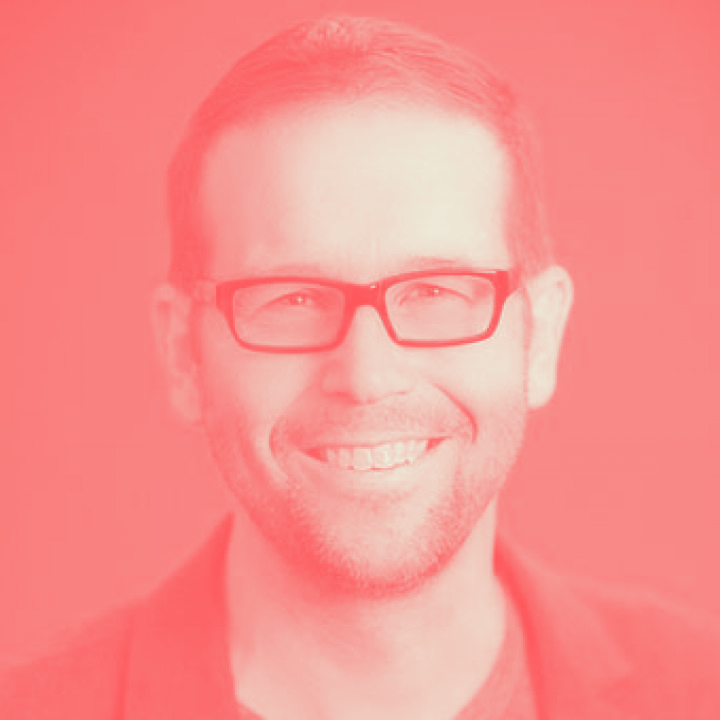News 10 January 2023
Actors’ views: Braxton Woodham

Why did you choose to prioritise the decentralisation of social graphs as the technical dimension of Project Liberty?
The short answer would be that we wanted to make sure that we can give the users the full power of the global Internet. To go a little bit more in depth, going back to my background and our core architects team’s background, in 2006, we built a mobile social network focused on video. By building it, we understood the importance of the social graph, which is the core data structure that actually unlocks all the network effects. They are so powerful that, when captured inside platforms, they create a “winner takes all” situation. You can see this situation with Meta or Twitter around different modalities: texts for Twitter or images for Instagram.
We believe that these network effects should be a public resource available to all application builders. Therefore, there should be more variety and less concentration of power within one group or one entity. These are the reasons why we think it is really important to decentralise social graphs and in doing so, really decentralise social networks.
When you say that network effects should be a public resource, what do you mean by public?
I mean that the core scaffolding of the social graph should be universally accessible. People use social graphs both in private and public contexts, so some of that graph will be universally accessible. Some of the data itself will also be universally visible. But then, other aspects of the social graph might be private and encrypted in the case of smaller, local social circles. We believe the social graph should be a publicly accessible infrastructure, but the data itself can be private or public. In this regard, we’ve been working with social scientists. We try to look at the way the real world works in order to replicate it in the digital world.
What is the added value of the Decentralized Social Networking Protocol (DSNP), compared to other protocols that also enable the decentralisation of social graphs, such as DeSo or Lens?
The DSNP incorporates three core concepts that, to my knowledge, make it unique in this space.
First, decentralisation introduces a difference from platforms like Facebook but also from any other social network of the current generation, like Reddit.
The second attribute is the ability to have immutable facts or truths: if you are documenting war crimes in Ukraine or certain medical pandemic information, you want to make sure that these facts are immutable. We think that you need blockchain for that. This aspect separates the DSNP not only from platforms like Facebook, but also from protocols like Scuttlebutt, which is a peer-to-peer protocol, or from Mastodon which is a federated social network. These approaches, we feel, fall short in that way.
The third aspect that differentiates the DSNP from other Web3 projects, is that it is isolated from economic incentives. We believe that we need to have a protocol that is not tied to economic incentives. If economic incentives are integrated, then at some point these systems will be captured by a few. This is why it’s important not to tie the DSNP to any token system: it is “blockchainable” but not tied to a blockchain. We treat blockchains like web servers: four different blockchains could support the DSNP, and you could inter-operate across the four different blockchains. We are building the first one, called Frequency, on Polkadot, but the DSNP is an open source protocol and anybody else could build a blockchain for it as well.
Do you know if other actors, independent from Project Liberty, have started developing solutions based on it?
Yes, we have a number of projects starting to move forward, implementing the DSNP via the Frequency blockchain. Different groups from France, the United States and Canada are requesting information to build against the DSNP and Frequency. We are starting to have that early movement. Then we have MeWe as a first strategic partner working with Frequency and developing the DSNP at some scale. But it is important to note that Frequency will only be going live this December. So until then, it is not yet possible to actually create apps on the DSNP and Frequency.
How do you envision the functioning of social graphs based on the DSNP? Will there be a dedicated interface where users will be able to modify their graph (add friends, remove them, etc.)?
Our vision is that people will use different applications built by different entrepreneurs for their social activities. We believe that there will be a universal kind of login button that won’t be tied to any particular company. Right now you can log in with Facebook or with Google for instance. We are coding a similar system internally that will allow you to log “with Liberty”. This will be not for profit and will allow every citizen to have a self sovereign ID. We want to multiply self sovereign ID providers because we believe there can’t be only one provider. Once again, we are really careful that these remain open protocols, that a private company does not dominate. We want it to be open-source non-profit code.
We also believe the portability of social graphs is very important: it means that you can access it from different apps. We watched the failure of “Circles” on Google+ back in the early 2000s. What I learned from that is that people won’t take the time to manage their social circles. They will still have different apps for different uses (professional uses, dating, family sharing, etc.) and will still almost certainly have the same behaviour they have today. However, at the protocol layer, there will be a universal substrate that will allow us to more easily switch between apps in a way that is not possible today. What we imagine is a single sign-on button, an easy way to find your friends or colleagues, an easy way to pull in information of yours and an easy way to share what you want to share in a particular app. It is not radically different, but it will be more convenient for everybody.
Still, blockchain is a very specific type of database: it is public, but also very expensive and slow to read and write. Therefore, its uses have to be extremely narrow. We want a very small fraction of information to be stored on it: not your profile pictures, your posts and this type of things. Instead, we could store hashes for images for example.
When it comes to giving consent for the collection and processing of our personal data, how will it work?
First of all, there is a whole “Policy” track being built within Project Liberty, in addition to the “Technology”, “Governance” and “Movement” ones. We know that we can’t solve these problems with technology alone. We firmly believe that people should have their own control over their data. Today, when you delegate your information to a social network, there’s no technical way to go in and make sure the app deletes your data if you ask for it. There is a need for regulatory enforcement stating that the app needs to provide a way for you to revoke permissions.
The protocol gives a very specific way to revoke permissions. Then, the regulation will ensure that the apps truly implement it and actually delete data. This will vary by territory. There won’t be, at least in the near future, a universal policy for personal data. Therefore, we will make sure that the protocol is flexible enough to support these differences.
The first implementation of the DSNP will be by MeWe, an existing social network. If this migration is a success, will you consider integrating the DSNP to other existing social networks?
That’s our goal. We would love for all of them to come over and implement the DSNP. In the end, we hope that the DSNP will become a core protocol, like HTTP.
MeWe will be the first to integrate our protocol. It is a privacy-focused social network, so they don’t need to change their product in a fundamental way to move to the DSNP. It already works with their ethos and their product. MeWe has 20 million users, and we are confident that this implementation will prove you can go onto this new infrastructure without having scaling problems. MeWe will be the largest decentralised social network in the world when this migration happens – obviously still tiny compared to Facebook. Scaling up is an important part of the roadmap and we have to do it step by step.
Finally, when we talk about migration versus adoption – even though we believe that at a five year horizon, most of the social apps we will use will be new and will draw new (Web3) uses –, it is because we believe it is urgent to get people out of the surveillance economy. That’s why we want to focus on migration.
At Unfinished Labs, are you going beyond the infrastructure layer, and working on application layer projects based on the DSNP?
Yes, with our technology group, we worked at all the layers to make sure everything works. So we did build applications on Android and iOS to work against the protocol. However, we are not building commercial apps. We build some for working through feasibility and development, but we are essentially working on supporting Frequency – which is the layer 1 infrastructure – and its ecosystem with some mix of partnerships, grants and investments.
We needed a layer 1 chain that would be designed for the dynamics of social media and that is environmentally sustainable, i.e. proof-of-stake based, instead of proof-of-work. We did not find any, so we came to the conclusion that we had to build it ourselves. This is how we got to Frequency. Polkadot emerged as the best choice technically. Moreover, their teams share our ideas that Web3 should not only be about NFTs or wealth creation but, first and foremost, about building a new generation of the Internet that benefits all of us.
If decentralised social networks do not own their users’ data, the business model based on personal data merchandising cannot, de facto, be replicated. How do you envision the business model of decentralised social networks?
We look at different models. First, at the infrastructure and storage layer, you will pay for these services as you do today for cloud services, for instance. The only difference will be that it will be decentralised and running on tokenised blockchain infrastructures. Then, at upper layers, you would pay for messaging (posting a video, commenting, liking, etc.) with tokens you might earn thanks to your activity in the social network. Nowadays, people can’t get compensated in the digital world. We think that value exchange will be much more bidirectional, so people can be compensated for their time, effort and contributions in a way.
Moreover, there will be ways for companies to interact with customers in a more open, transparent and fair way. They could compensate the customer for checking out their products, for instance. Companies could ask directly for your preferences and they will learn a lot more about you than if they surveil you on social networks. For your contribution, you could earn money. There is no such mechanism existing today and this could be great for the economy, for product companies and consumers.
What is, in your opinion, the biggest obstacle to the large-scale adoption of decentralised social networks? How to democratise the use of such networks?
There are two barriers. The first one will be crossed soon, with our project and others, but there is no ideal product to go use right now. Federated decentralised networks such as Mastodon exist, and they are well intentioned. But they were designed before a lot of this latest technology was even available. We need to get technology out there and we are only quarters away now.
Once that happens, the next big barrier will be people adopting the new technology, learning how to use digital wallets, for instance, and enjoying a good user experience. Some of that will be cultural – people will learn – and some of it will be technical – people will build better interfaces. If you think about the Internet, you have to remember that we did not know how to use a browser twenty years ago.
Although decentralised social networks may reduce content virality, they raise questions about moderation and the proliferation of harmful or illegal content. How can we technically tackle this issue? Is Project Liberty working on it?
First, at Project Liberty, we are convinced that it is not about technology alone. A hammer can be used to build a house or to kill someone, for instance. With the emergence of decentralised autonomous organisations, there is a regulatory policy as well as a governance aspect to take into account.
Then, on the technology side, we want to really focus on values-driven development. We not only want economic sustainability but also environmental and cultural sustainability.
Besides, thanks to the universal social graph, we have a vision for federated moderation. Every application and service would be able to access public posts and public information. Imagine that any post that mentions “Covid-19” could be accessed by a medical organisation. They could score them as being highly accurate or not accurate. Then a level above that, you could have consortiums with credible experts that could be certified. The app layer would ask to use a specific consortium for moderation. And through this protocol, expert people would be pulled in. The vision is to decentralise moderation and make it participatory. Blockchain is valuable here, because we could use non-transferable tokens, not just non-fungible tokens (NFTs), for degrees or certifications. It would give you the credentials to participate in the moderation.
Today, in a social media landscape, you can’t tell who’s who and, basically, whoever is the funniest and the loudest is who you hear. Instead of this, we are looking at replicating the analog world, where you can differentiate people. It was great to create a level playing field with the Internet, where any regular person could have a voice. But the downside of it is that you can’t differentiate experts anymore.
-

Publication 3 July 2020
Moderating our (dis)content: renewing the regulatory approach
-

Publication 11 May 2020
Regulating digital platforms: Why and how?

